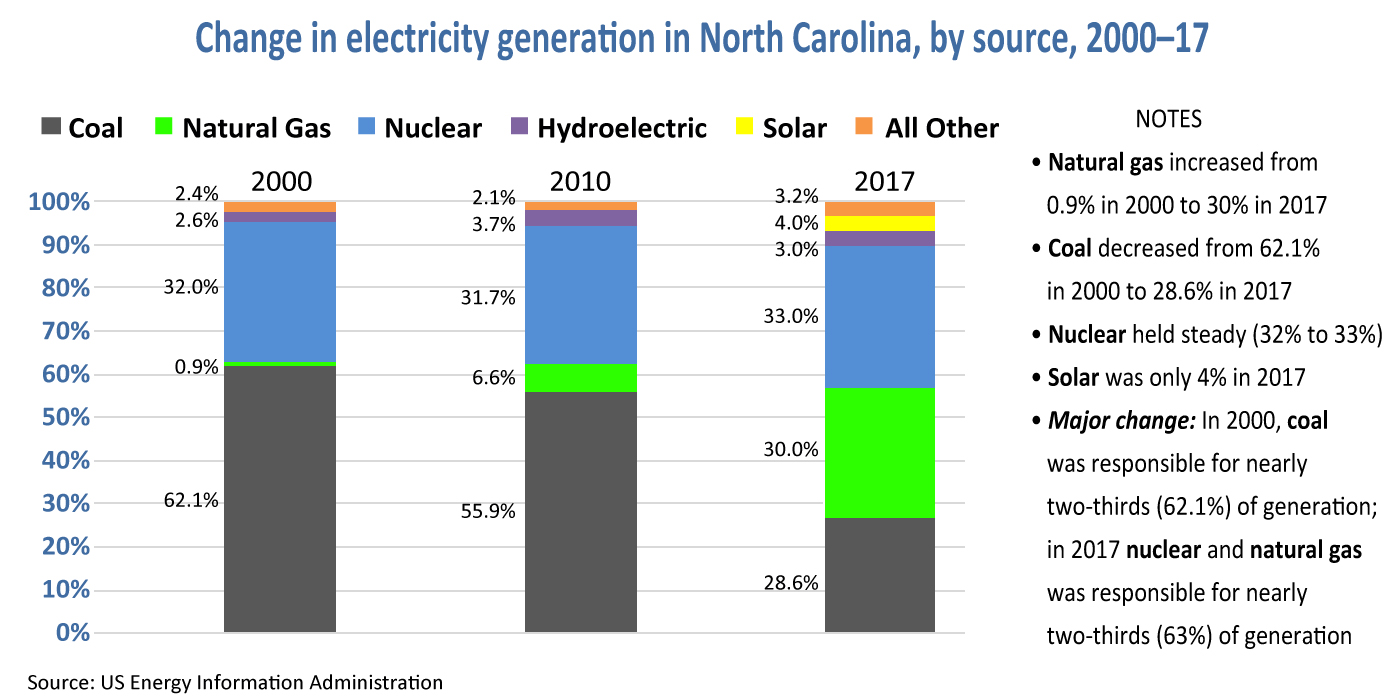I’m updating a chart from my 2017 Spotlight report on The Market Forces Behind North Carolina’s Falling Emissions with the most recent data from the U.S. Energy Information Administration.
Click the image for a larger size:
At the start of the century, coal was the top source of electricity in North Carolina by far, producing nearly two-thirds (62.1 percent) of the state’s electricity. Now it’s nuclear (33 percent) following by natural gas (30 percent).
The dramatic rise in natural gas is the big story: from 0.9 percent in 2000 to 30 percent in 2017, thanks to competitive-priced natural gas because of technological change in recovering oil and gas resources.
Despite the near-obsession in policymaking, rent-seeking, and media reporting, solar was producing a mere pittance (4 percent) by 2017.
For those who favor efficient energy provision along with emissions reductions, this mix is closer to hitting the mark, as research from Brookings and others have shown. Nuclear and natural gas are the most inexpensive, efficient ways to reduce emissions, while solar and wind are the most expensive and least efficient:
If that sounds counter to everything that policymakers, rent-seekers, and media say about solar and wind, it’s because they don’t take into account that those sources are intermittent. They require some dispatchable, traditional (fossil-fuel) source always ready to provide backup generation for all the times the sun ducks behind a cloud or the wind dies down. One must understand that solar and wind are package deals with a fossil-fuel source idling by.




